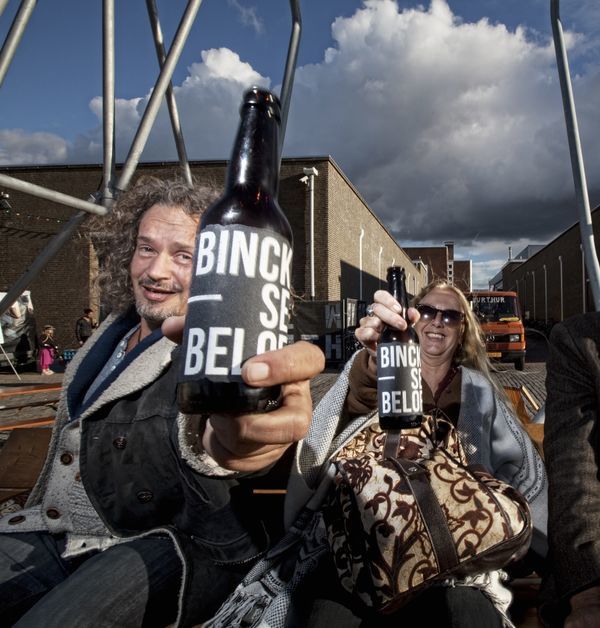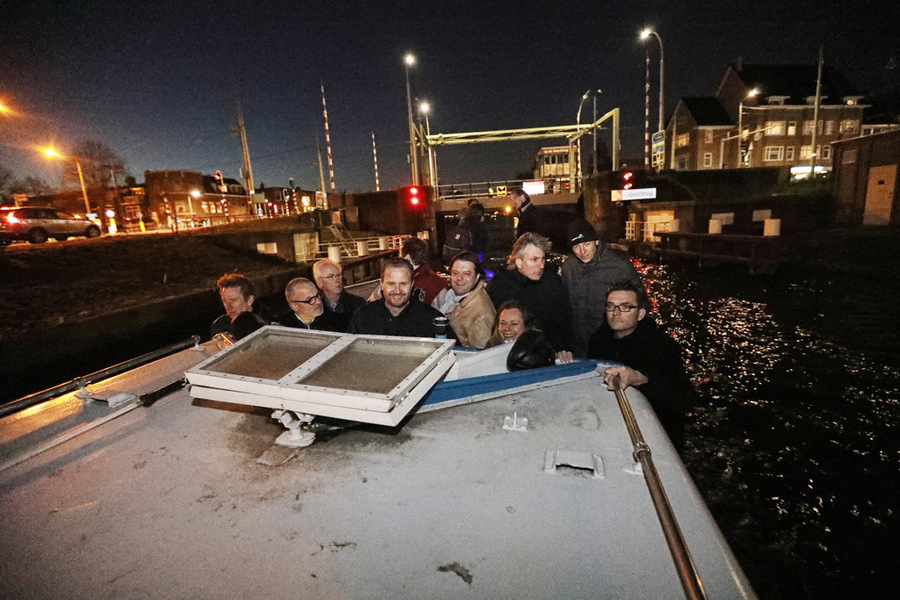Before and After
Contents
Since 2011 my work is based in the Binckhorst, a large industrial area in The Hague not too far from the city centre. An area in transition. An area which after the financial crisis was up for organic urban development because the municipality and developers had no capital to invest. A clean sheet with all kinds of possibilities to re-think urban development and to be part of this development. Not Between Times any more but right in the middle.
My work in the Binckhorst, you could say, is a bit schizophrenic; first of all my education is that of an ‘traditional’ Artist, I learned my techniques etc., but also to think in future images not constrained by rules and regulations. ‘Out of the box’ if you like. This was further shaped when, after I graduated from the KABK (Art Academy The Hague), I started to live and work in area’s of the city where housing and workspace were cheap. Area’s in transition which came almost to a standstill socially, economically and culturally because it’s inhabitants were moved out, the empty houses boarded up (sometimes for over a year) and later on demolished. The total reconstruction of a neighbourhood as Transvaal (near the city centre) took almost fifteen years. Together with three other artists I started Mobiel office OpTrek which tried to discuss this period in between: Between Times (www.optrek.org; http://www.hoteltransvaal.com/lab). To get an idea of some of the projects we did; Hotel Transvaal together with the ‘Laboratory of the interim’ was our last big project in Transvaal.
What could or should our role as artists be in such an area in transition? What could we bring to the table in the discussion of how such a period should be handled by both the municipality and it’s policies and the people who lived and worked in this area? Although we weren’t there from the start of the transition we learned a lot in the period we worked in Transvaal. We soon found out that to have any real influence at all as an artists-initiative in the development of projects and plans for the area you should be there at the beginning when the network is formed, the connections made, the coalitions formed with developers and municipality but also the entrepreneurs and people living in the area. That’s the time you still can point out the core values and qualities of the area to those involved. Later on this becomes more difficult; you can still do all the above but the main project is already on its way. It helped to be in the area for a longer period as people started to see us more as a ‘fixed’ value. So in time we became more involved and took responsibility in showing the potentials of an area in transition (Hotel Transvaal). We weren’t there to paint the woodwork of the boarded up houses or just another intermission! During the projects I did in Transvaal it became apparent that I wasn’t just an artist; I was also a pioneer and connector. Working in Transvaal was a perfect stepping stone for the Binckhorst.
This brings me to the role of Pioneer. As I said, I was educated to think in future images. Not per se in the process of getting there. This was sort of good as it didn’t constrain me to engage in experiments where others probably wouldn’t have ventured. You could also say that this is sheer ignorance and a lot has been learned the hard way. But most of the time I got there in the end. It still benefits my work today and will so in the future.
The third role I have is that of Connector. Almost all the projects I develop are grounded in the area, it’s people, it’s history and it’s activities. Some big, some small, some for a longer period, others only for a day. Some serious, some playful. But all with the same purpose; show the potential of the Binckhorst, it’s core values and qualities, it’s people, it’s activities. To do that I had to make connections which weren’t there yet; within the Binckhorst but also connecting the Binckhorst with the rest of the city.
So to ‘provoke change’ I began to talk to people who worked and lived in the area, asked about their wishes, there needs, their plans and soon I organized the first Network Meeting in which I invited people from the area to meet each other and, by organizing pitches by different entrepreneurs from the area, show each other what they are doing in the Binckhorst. Getting to know each other, building up relations, is for me the fundament of change. Getting to know the area where you work and live together with others is the start of ownership, new initiatives and a more liveable and sustainable area. Platforms like I’M BINCK (Investeringsmaatschappij Binckhorst; Investment Company Binckhorst; platform for the public interest of the Binckhorst; www.imbinck.nl) and ReSourceCity Binckhorst (program and building to stimulate circular thinking and projects in the area; http://www.optrek.org/project/27/de-maakplek) were developed next to make the important step of being one of the stakeholders in the area.
This is what drives me most; Is it possible to connect and collaborate, to provoke change as you will, on a broader and equal scale with important stakeholders like the municipality and developers in the Binckhorst? Even make plans together or at least implement the Binckhorsts core values and qualities in their plans and policies?
We’re now in the middle of this exciting process where a lot of changes are and will be made in the Binckhorst. Time will tell if we succeed. I know I will need all of my roles and knowledge to reinvent myself constantly and find out what will be meaningful in this process. Next to that, I have to be patient, be there for the long-term and be brave enough to start over again.
Sabrina Lindemann, urban curator & Bart LutLinks
CONTRIBUTE
Feel free to contribute to Beyond Social.












